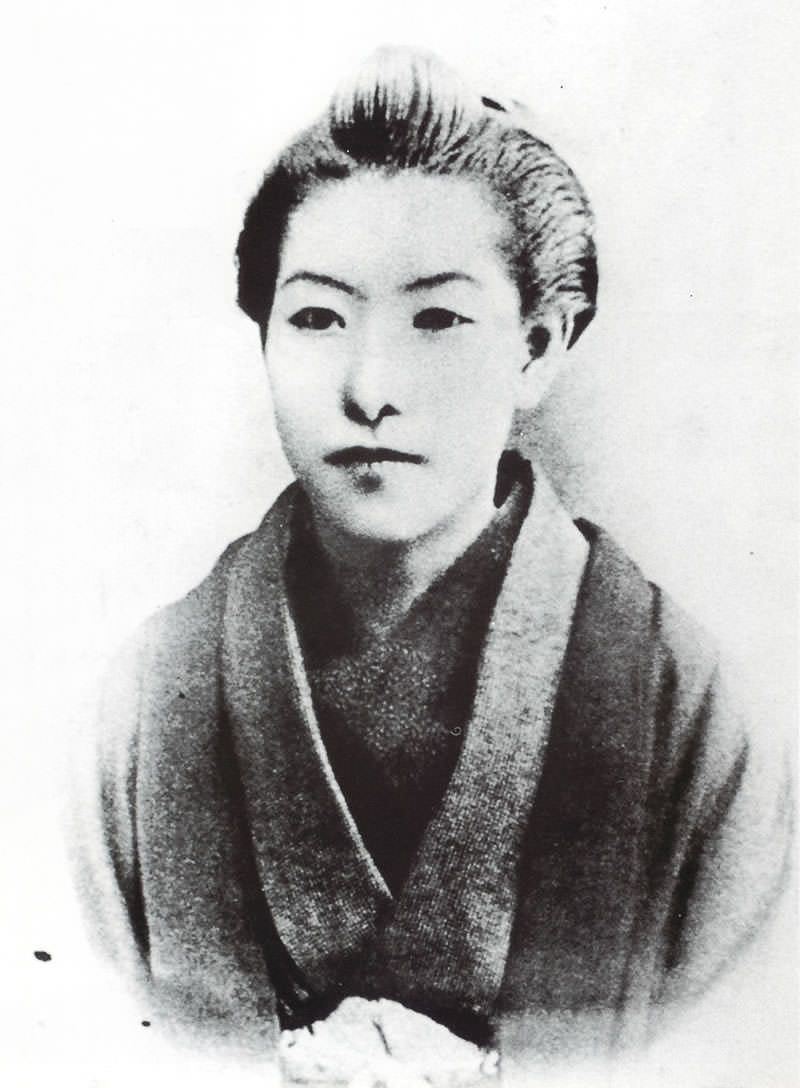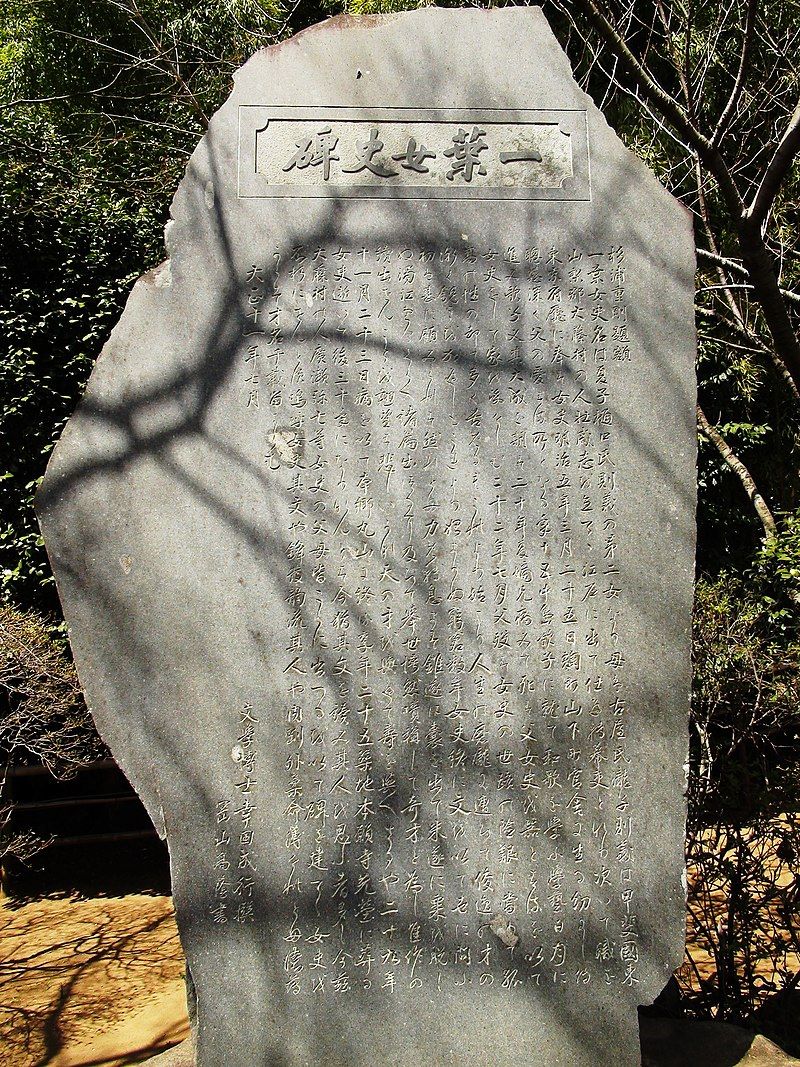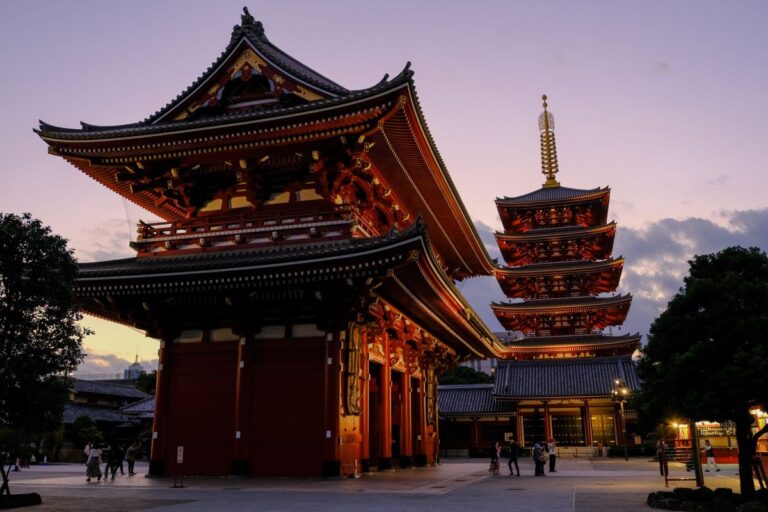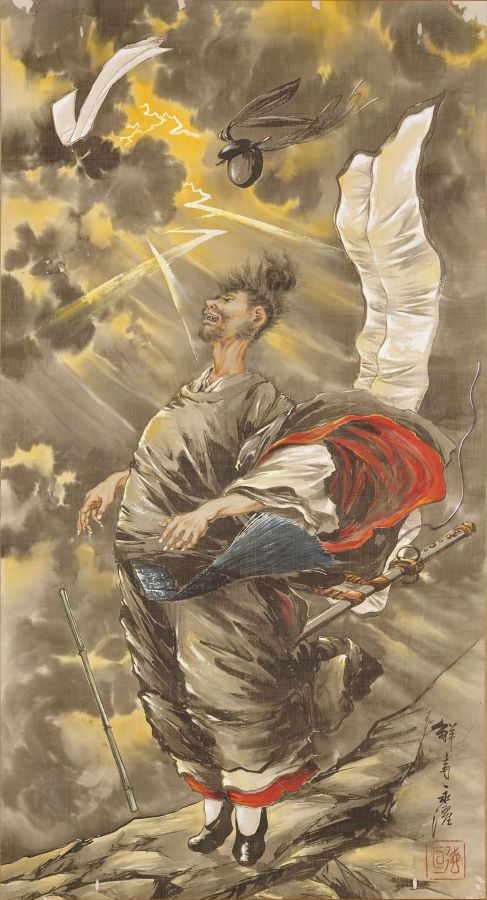Ichiyō Higuchi was a prominent Japanese writer who lived during the Meiji period. She is considered one of the most important female writers in Japanese literature and her works are still widely read and studied today. Ichiyō was born in 1872 in Tokyo and grew up in a poor family. Despite her difficult circumstances, she showed an early talent for writing and began to publish her work in literary magazines when she was still a teenager.
Ichiyō’s writing is known for its vivid descriptions of everyday life in Japan during the Meiji period, as well as its focus on the struggles of women and the poor. Her most famous works include “Takekurabe” (“Growing Up”), “Nigorie” (“Troubled Waters”), and “Umoregi” (“The Buried Tree”). These stories are often praised for their realism and the way they capture the complexities of human relationships.
Despite her relatively short life (Ichiyō died at the age of 24), her impact on Japanese literature was significant. She was one of the first female writers to gain widespread recognition in Japan and her work helped pave the way for other women to pursue careers in writing. Today, she is remembered as a pioneering figure in Japanese literature and a symbol of the power of the written word to transcend social barriers.
Early Years

Ichiyō Higuchi was born in Tokyo, Japan on May 2, 1872, during the Meiji Restoration. Her father was a low-ranking samurai who worked as a clerk in the Ministry of Justice. Her mother was the daughter of a physician. Ichiyō was the youngest of eight children, and her parents had high hopes for her future.
However, when Ichiyō was just three years old, her father lost his job due to a political scandal. The family was forced to move to a poorer neighborhood, and Ichiyō’s father became an alcoholic. Her mother worked hard to support the family, but they still struggled to make ends meet.
Despite the family’s financial difficulties, Ichiyō’s parents placed a strong emphasis on education. Ichiyō was a bright student and loved to read. She attended a local school for girls, where she excelled in literature and poetry. At the age of 14, she began writing her own poetry and short stories.
Writing Career
After the publication of her first short story, “Jūsan’ya” in 1892, Ichiyō Higuchi’s writing career took off. She became known for her vivid and realistic portrayals of the lives of women in the late Edo period and early Meiji era.
Throughout her career, Ichiyō wrote numerous short stories and serialized novels for various literary magazines. Her works often focused on the struggles of women in a male-dominated society, and she was praised for her ability to capture their emotions and inner thoughts.
One of her most famous works is the novel “Takekurabe” (Child’s Play), which was serialized in a literary magazine in 1895. The novel tells the story of two young girls from different social classes who become friends and navigate the challenges of growing up in a society that places strict expectations on women.
In addition to her fiction writing, Ichiyō also wrote essays and criticism on literature and society. She was known for her sharp wit and insightful commentary on the issues of her time.
Major Works

Ichiyō Higuchi is known for her literary works that depict the lives of women in Japan during the Meiji period. Some of her major works include:
- Takekurabe (Child’s Play) – This is one of Higuchi’s most famous works. It is a novella that tells the story of two young girls growing up in the pleasure district of Tokyo. The story explores themes of friendship, jealousy, and societal expectations.
- Nigorie (Troubled Waters) – This is a short story that tells the story of a young woman who is forced to marry a man she does not love. The story explores the societal pressures placed on women during the Meiji period.
- Yamizakura (Night Blooming Cherry Blossoms) – This is a short story that tells the story of a young woman who is forced to become a geisha to support her family. The story explores the hardships faced by women who were forced to work in the pleasure districts of Japan.
Higuchi’s works are known for their vivid descriptions of life in Japan during the Meiji period. She often wrote about the struggles faced by women who were forced to navigate societal expectations and gender roles. Her works continue to be celebrated for their insight into the lives of women during this time period.
Legacy and Impact

Ichiyō Higuchi’s literary legacy is significant, as she is considered to be one of the most important female writers in Japanese literature. Her works continue to be studied and celebrated today, and her influence can be seen in the works of many contemporary Japanese writers.
Despite her short life and limited output, Higuchi’s impact on Japanese literature cannot be overstated. Her writing style, which was characterized by its emotional intensity and psychological depth, was a departure from the more traditional styles of the time. She paved the way for other female writers to follow in her footsteps and helped to create a new literary tradition in Japan.
Additionally, Higuchi’s works have been translated into several languages, including English, and have been widely read and studied outside of Japan. Her stories have been praised for their universal themes and their ability to resonate with readers from all cultures.
Overall, Ichiyō Higuchi’s legacy as a writer and a pioneer in Japanese literature is secure. Her works continue to be read and studied by scholars and readers alike, and her influence can be seen in the works of many contemporary writers.



